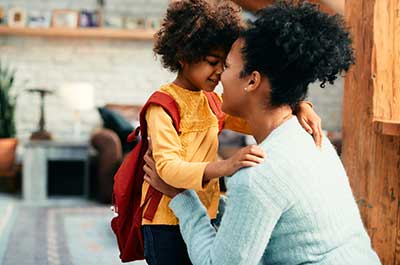At your child’s annual wellness check, you expect the doctor to discuss their growth and development, vaccines and other health recommendations. But recently, there’s another important topic pediatricians may bring up: gun safety.
Approximately one-third of children in the U.S. live in households that contain firearms. In most of those homes, the guns aren’t easily accessible. But about 21% of households contain at least one loaded and unlocked gun. That translates to around 4.6 million kids who have access to a loaded weapon.
“As pediatricians, it’s important to talk to parents and kids about gun safety and what to do if you see one,” says Bridget McArdle, D.O., a pediatrician at Henry Ford Health. “We make sure to bring up the topic, explain the safety concerns and answer any questions families have.”
The Importance of Gun Safety in the Home
Having firearms in your home that aren’t stored safely greatly increases danger to both your own children and others. Guns are the leading cause of death for children and teenagers in the U.S. According to a recent report, at least 2,500 children aged 17 and younger die from gun violence each year.
When kids have access to guns, the risk of shootings greatly increases. Unintentional shootings usually occur when a child or teen picks up a gun to play with it or show it to a friend. They may accidentally find the gun or know that it’s stored in a nightstand or dresser drawer. Unlocked guns can, unfortunately, also find their way into the hands of kids and teens looking to intentionally harm themselves or others.
Locking up firearms securely is the best way to keep your children—and others—safer in your home.
How to Store Guns Safely
“There are two important rules when it comes to storing guns safely,” says Dr. McArdle. “Lock the gun and, separately, lock away the ammunition.”
Keeping unloaded firearms and ammunition locked up separately reduces the risk of accidental shootings. Ideally, use a trigger lock on unloaded guns and store them in a gun safe, with ammunition locked in a different location. Make sure the combination isn’t easy for children to guess, or consider using fingerprint locks.
At Henry Ford, pediatricians are participating in the S.A.F.E. Firearm program. This effort provides doctors with cable locks they can give to any family who needs to secure a gun in their home.

Need A Pediatrician?
Talking to Your Kids About Guns
Whether or not you have firearms in your home, it’s important to talk about gun safety with your children. “Parents often feel uncomfortable talking about guns with their kids and with other parents,” says Dr. McArdle. “But it’s a conversation you shouldn’t avoid.”
When talking to your kids about guns, you need to tailor it to their age and maturity. But the message is the same at any age. If you see a gun, don’t touch it and tell a trusted adult right away.
“It should be a conversation that’s as normal as talking about any other safety issue,” says Dr. McArdle. “Whether that’s safety in the water, wearing a bike helmet, or avoiding risky behaviors like drugs and alcohol.”
It’s equally important to bring up the topic when your child is visiting a friend’s house for a playdate or sleepover. Dr. McArdle encourages parents to talk to other parents about gun safety—without bringing politics or judgement into the conversation.
“Asking ‘do you have a gun in the house,’ might feel like a judgement about their choices,” she says. “Instead, frame it purely as a safety issue. Ask ‘If you have guns in the house, are they locked and stored safely?’”
Ignoring the issue—with your children, other parents or in your own home—can put your children at risk. If you have firearms at home, store them safely. And make sure anyone your child spends time with does the same.
Reviewed by Bridget McArdle, D.O., a pediatrician at Henry Ford Health.



